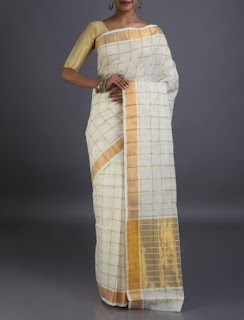A popular handloom weaving destination, Venkatgiri located in Nellore district of Andhra Pradesh state in India is renowned all over the world for its unique weaving excellence. A drape that’s known to bring feminity and grace, these sarees have been woven for centuries now. History has it that about 500 to 600 years back, the royal family of Venkatgiri moved from Karnul district and settled here and they also brought along with them weavers whose generations are still weaving handwoven sarees here. Currently weaving in the palace of the Venkatgiri Raja, there are about 2600 families that are solely dependent on handwoven sarees for their living. Once upon a time, there were only a handful of sarees made by these weavers to meet the royal needs and the remuneration they got from them was very much sufficient for whole of the year. Their exceptional looks were so popular that there was demand for them from the nearby kingdoms too. And that is how Venkatgiri sarees soon became world renowned.
The two major weaving communities in Venkatgiri are the Padmasali and Devanga communities that are engaged in weaving profession in the area like Manulala pet and Bangarupet. Devanga community weavers are in this profession since 1600 AD. They have all migrated from Kadapa district in 1600 AD. Venkatagiri is famous for "Jamdani" design which was imported from Bangladesh. Four Venkatagiri weavers won President Award for weaving in the past.
The weavers in Venkatagiri mainly produce sarees in cotton, silk cotton and pure silk. The counts in the fabric give the softness to the fabric. More the thread counts, softer is the saree. The counts used in venkatgiri cotton sarees are usually 100 in length and 100 in breadth. In silk variant, it uses the 3 ply technique for weaving. One Pachamat a time can make 4 sarees where pacham is the length of the yarn loaded in looms.
Most of the Venkatgiri weavers go through the merchants for selling the end product. On an average, a weaver can weave about ten sarees a month and earnsabout4000 to 5000 rupees. The yarn is purchased by merchants and given to the weavers along with the designs. They weave the sarees as per the design requirements are given by the merchant. The weavers receive their remuneration once the finished product is returned to the merchant.
Image Courtesy:
http://bit.ly/2qvCS2E
http://bit.ly/2r7gsDp
http://bit.ly/2r73zt4

























